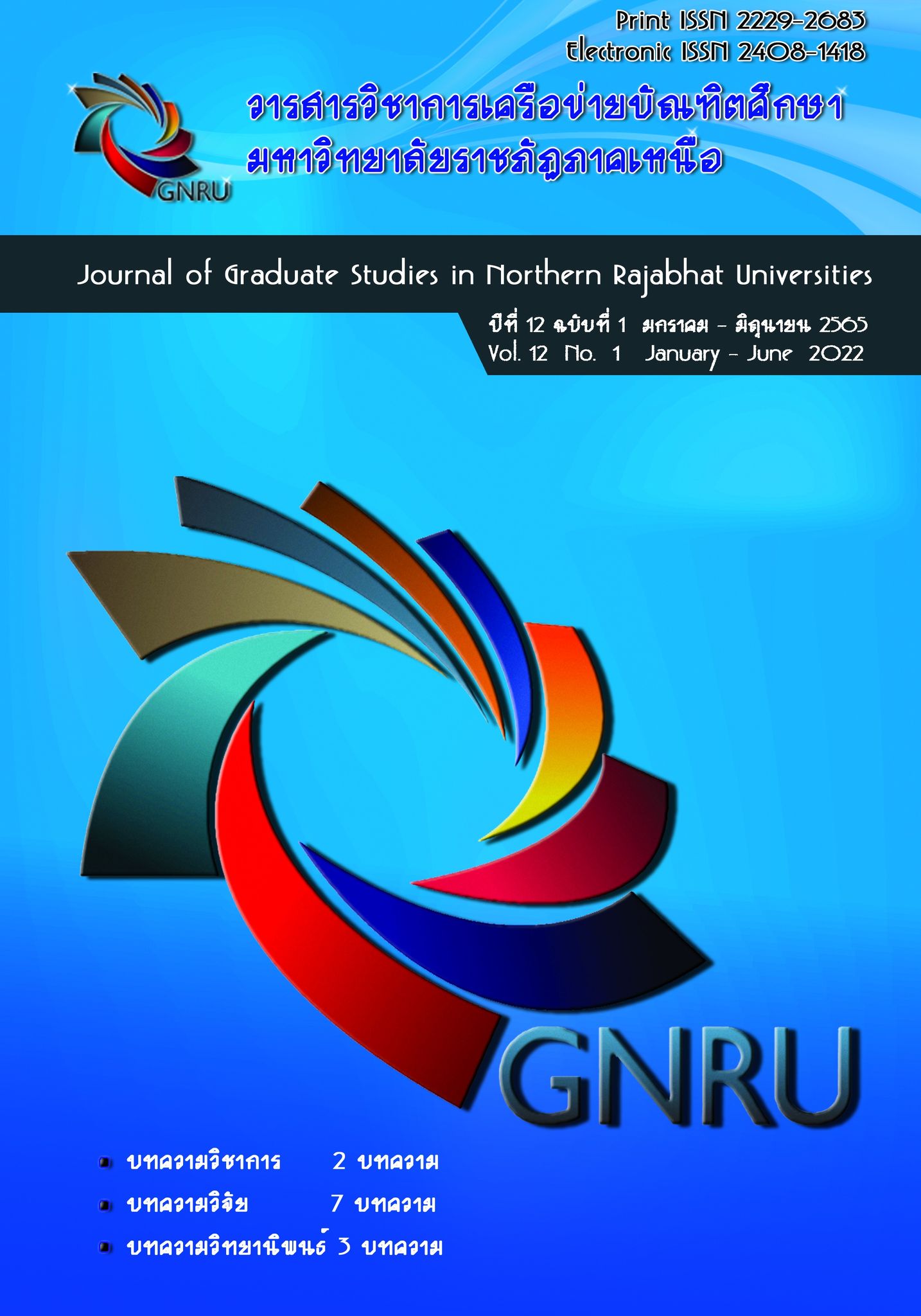การวิเคราะห์ศักยภาพ โอกาส และความสามารถในการแข่งขันทางการค้า ของประเทศไทยกับประเทศจีนตอนใต้ : กรณีศึกษากลุ่มจังหวัดภาคเหนือตอนบน 2 (เชียงราย พะเยา แพร่ น่าน) Analysis of Potential and Competitiveness in Trade of Thailand and Southern China: Case Study of Upper Northern Province Group 2 (Chiang Rai, Phayao, Phrae, Nan)
Main Article Content
Abstract
The main objectives of this study consisted of; 1) The trade situation of Thailand with Southern China in the Upper Northern Provinces Group; 2) To analyze the potential and opportunities of the Upper Northern Provinces Group 2 (Chiang Rai, Phayao, Phrae, Nan) in terms of trade with Southern China; 3) To analyze the trade competitiveness of the Upper Northern Provinces Group and Southern China. The research was based on Mixed Methods research (Mixed Methods). The population and the sample group were government and private sectors relevant to the trade industry in the Upper Northern Provinces Group 2. Quantitative Data and Descriptive Data were utilized. Descriptive Data analysis was conducted using the Revealed Comparative Advantage Index (RCA) and the Market Share (MS). Qualitative Data analysis utilized Content Analysis.
The results of the study revealed that the trend of trade between Thailand Upper Northern Provinces Group 2 and Southern China has increase, even in the current Covid-19 pandemic. The Covid-19 pandemic has caused a decrease in trade value, yet there is still a current trade balance. The portion of trade that occurs is approximately 11.04% of Thailand’s cross-border trade with Southern China, however, the portion of trade balance is high compared to the cross-border trade balance. In 2020, it accounted for 171.18% of Thailand’s cross-border trade balance with Southern China. When analyzing the potential and opportunities of the province’s trade, it was found that the key strengths included physical characteristics that are adjacent to GMS countries and have a potential logistics system connection in Thailand. The main current weakness is the structure of the economy, whilst the main economic branch of the people in the provincial group does not correspond to the imports and exports between Thailand and Southern China. Most of the products come from various other areas, which causes the local people in the area to not fully benefit. Trade opportunities with China include China’s “One Belt, One Road” policy that is conducive to trade and investment. Most importantly, current trade barriers include the Covid 19 epidemic, as well as technological changes, which results in changed consumer behavior and trade patterns.
When analyzing the commercial competitiveness of the province’s trade, a key focus is placed on agricultural products, which are important products within these provinces. Data indicated that the competitive products and advantages in the Chinese Market (RCA>1) consisted of rice, broken rice, fresh and dried pineapple, durian, longan, lychee, cassava, red bean , sweet corn, rubber, and processed rubber products. However, some agricultural products tend to have lower competitive advantages. Therefore, the government has a strategy to promote and adapt to benefit from international trade, spreading into the area of the provinces as much as possible.
Article Details
References
จักรี เตจ๊ะวารี และคณะ. (2553).การวิเคราะห์ความสามารถในการแข่งขันในตลาดผลไม้ไทย-จีน. วารสารเศรษฐศาสตร์ มหาวิทยาลัยเชียงใหม่. มกราคม-มิถุนายน 2553,2-21.
ถนอมจิตร สิริภาคพรและคณะ .(2556). อุตสาหกรรมแปรรูปสินค้าเกษตรภายใต้ความไม่แน่นอนของเศรษฐกิจโลก. ในโครงการสัมมนาวิชาการเศรษฐกิจภาคใต้ ปี 2556. สงขลา :ธนาคารแห่งประเทศไทย
นิสิต พันธมิตร.(2553). เศรษฐกิจเสรีนิยมและการค้าชายแดนภาคเหนือ. เชียงใหม่ .ศูนย์อาเซียนศึกษา มหาวิทยาลัยเชียงใหม่
วันทนา รอดบุตร .(2561). วิเคราะห์ความสามารถในการแข่งขันของการส่งออกมันสำปะหลังไทยไปตอนจีน. วารสารสถาบันวิชาการป้องกันประเทศ. กันยายน-ธันวาคม 2561,99-110.
สถาบันวิจัยเพื่อการพัฒนาประเทศไทย (2561). การประเมินความสามารถในการแข่งขันของไทย โดยอาศัยการวิเคราะห์ดัชนีความสามารถในการแข่งขันเชิงเปรียบเทียบที่ปรากฎ. สืบค้นเมื่อ 15 กุมภาพันธ์ 2564, จาก https://tdri.or.th/wp-content/uploads/2018/01/Dr.-Nonarit.pdf
อัครพงศ์ อั้นทอง และอริยา เผ่าเครื่อง.(2553).ความสามารถในการแข่งขันของสินค้าเกษตรที่สำคัญของไทย. วารสารเศรษฐศาสตร์ มหาวิทยาลัยเชียงใหม่. มกราคม-มิถุนายน 2553,22-45.
Balassa, B. (1989). Comparative Advantage, Trade Policy And Economic Development. New York: Harvester Wheatsheaf.


